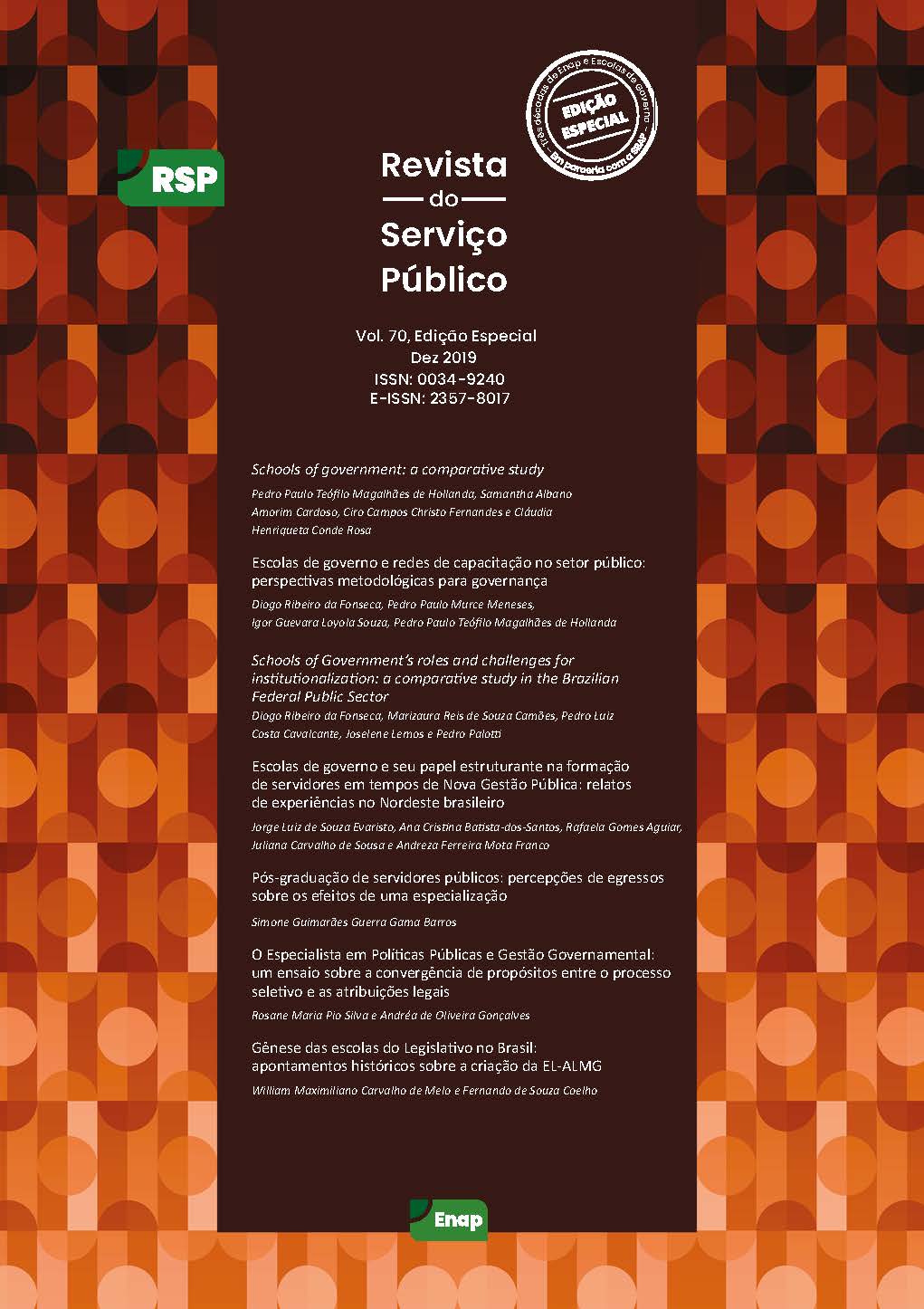Schools of Government: a comparative study
DOI:
https://doi.org/10.21874/rsp.v70i0.1514Keywords:
escolas de governo, estudo comparativo, capacidades estataisAbstract
The Schools of Government perform a central role to the public service of many countries. Despite being a disseminated and well-established phenomenon, the functions and even the concept of Schools of Government vary. Aiming to portray the functions and characteristics of Schools of Government around the world and offer a better understanding of them, this paper presents a comparative study of Schools of Government located across five continents. Based on purposive sampling, eight Schools of Government were selected to be part of this in depth study: École Nationale d'Administration, ENA – France; Canada School of Public Service, CSPS – Canada; Instituto Nacional de la Administración Pública, INAP – Argentina; Australia and New Zealand School of Government, ANZSOG – Australia and New Zealand; Civil Service College, CSC – Singapore; National School of Government, NSG – South Africa; Direcção Geral da Qualificação dos Trabalhadores em Funções Públicas, INA – Portugal; and Escuela Superior de Administración Pública, ESAP – Colombia. Data collection procedures included interviews and document analysis. Data was analyzed using content and comparative analysis. This study highlights some important dimensions of Schools of Government including the position within the government, funding, main activities, organizational structure and personnel. Other similarities (e.g. among members of Commonwealth) and possible common trends and innovation challenges are also discussed. Finally, we discuss the results comparing them to previous studies findings.
Downloads
Downloads
Published
How to Cite
Issue
Section
License
- A RSP adota a licença Creative Commons (CC) do tipo Atribuição – Uso Não-Comercial (BY-NC).
- A licença permite que outros remixem, adaptem e criem obra licenciada, sendo proibido o uso com fins comerciais.
- As novas obras devem fazer referência ao autor nos créditos e não podem ser usadas com fins comerciais, porém não precisam ser licenciadas sob os mesmos termos dessa licença.
- Ao publicar o artigo na RSP, o autor cede e transfere para a ENAP os direitos autorais patrimoniais referentes ao artigo.
- O artigo publicado na RSP não poderá ser divulgado em outro meio sem a devida referência à publicação de origem.
- O autor que tiver o artigo publicado na RSP deverá assinar o Termo de Concessão de Direitos Autorais (em momento oportuno a editoria da Revista entrará em contato com o autor para assinatura do Termo).



